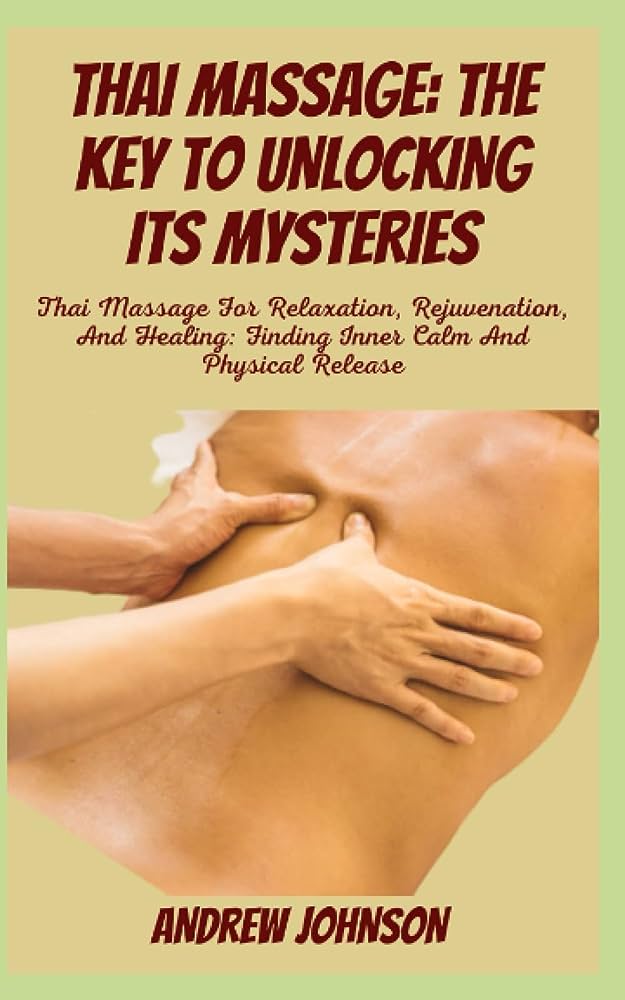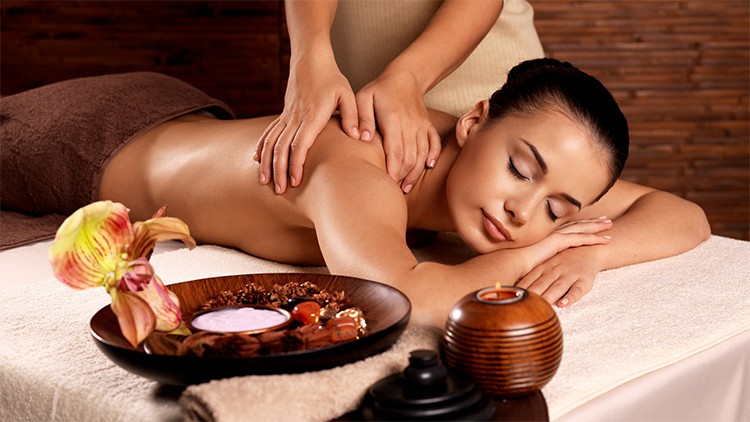Have you ever wondered what lies behind the secrets of Traditional Thai Massage? Maybe you’ve heard about it, seen pictures, or even tried it for yourself. But what exactly makes this ancient healing practice so unique and effective? In this wellness guide, we’re going to unlock the secrets of Traditional Thai Massage and delve into the rich history, techniques, and benefits it brings to your overall well-being.
Traditional Thai Massage is not your typical massage experience. It goes beyond just relaxation and reaching a state of bliss. With its roots deeply embedded in the ancient practices of Buddhism and Ayurveda, this 2,500-year-old technique not only aims to relieve physical tension but also balances the body’s energy and promotes spiritual healing.
Throughout this guide, you will learn about the various elements and techniques that make up Traditional Thai Massage. From the rhythmic pressure applied by the therapist’s hands, thumbs, elbows, and even feet, to the stretching and yoga-like postures, every aspect of this massage is designed to restore harmony to the body. We’ll also explore the benefits you can expect to reap from regular Thai Massage sessions, such as improved circulation, reduced stress, increased flexibility, and enhanced energy flow.
So, if you’re ready to dive into the world of Traditional Thai Massage and unlock its secrets, then grab a cup of herbal tea, put on some relaxing music, and get ready to embark on a journey of wellness and rejuvenation. In the following articles, we’ll guide you through what to expect during a Thai Massage session, how to find a reputable practitioner, as well as additional self-care tips you can incorporate into your daily routine to complement the healing effects of this ancient practice.
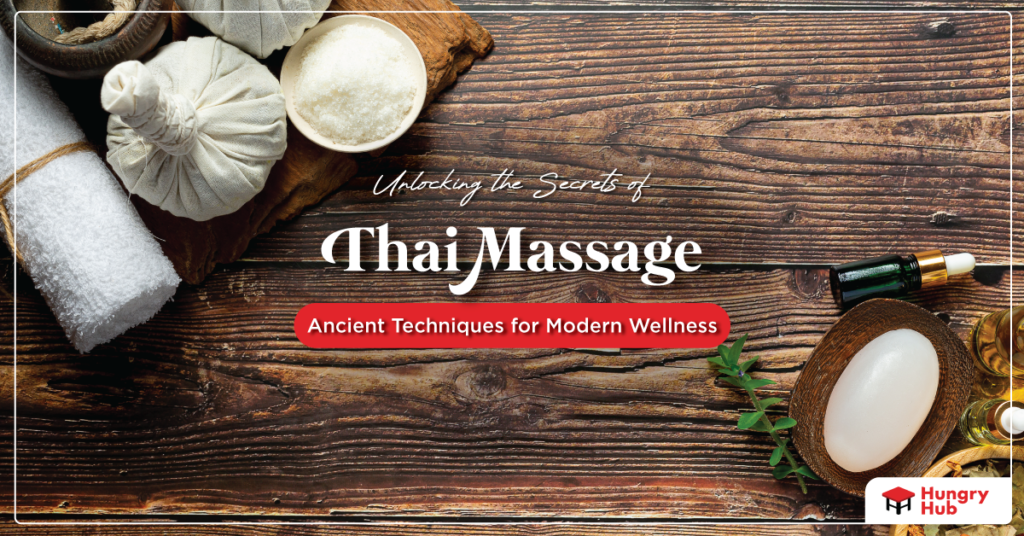
Origins of Traditional Thai Massage
Historical Background
Welcome to our wellness guide on the origins and secrets of Traditional Thai Massage. Thailand, known as the “Land of Smiles,” has a rich history of healing practices rooted in ancient traditions. Traditional Thai Massage, also known as Nuat Thai, is one such practice that has been passed down through generations for over 2,500 years. Let’s explore how this ancient art form originated and evolved over time.
Thai Massage draws its influences from various cultures that have shaped the region’s history. The techniques and principles of Thai Massage are believed to have been brought to Thailand by Buddhist monks from India sometime around the 3rd century BCE. These monks infused their knowledge of yoga and Ayurveda with local techniques, resulting in the birth of Traditional Thai Massage.
Influences from Traditional Medicine
Traditional Thai Massage is closely intertwined with the ancient healing system of Thailand known as Thai Traditional Medicine. This holistic approach to wellness incorporates elements of Ayurveda, Chinese Medicine, and traditional folk medicine, creating a unique blend of practices that aim to restore balance and harmony within the body.
Since its inception, Thai Massage has evolved in response to the influences of various medical systems and healing traditions. Over the centuries, Thai Massage has integrated techniques such as acupressure, reflexology, and herbal remedies. This fusion of practices has contributed to the effectiveness and popularity of Traditional Thai Massage globally.
Ancient Healing Techniques
Thai Massage is rooted in the belief that energy, or “lom,” flows through the body along pathways called “sen lines.” By releasing blockages and balancing the energy flow, Thai Massage promotes healing and restores vitality. The massage therapist utilizes a combination of stretching, acupressure, and assisted yoga poses to manipulate the body and achieve these desired outcomes.
The ancient healing techniques employed in Thai Massage target the body’s physical, emotional, and energetic dimensions. By harmonizing the breath, stretching muscles, and applying pressure to specific points, the therapist helps to alleviate pain, reduce stress, and increase flexibility. These therapeutic techniques have been refined over centuries, making Traditional Thai Massage a popular modality for holistic wellness.
Philosophy and Principles
Balancing Energy Flow
At the core of Traditional Thai Massage is the belief in balancing the flow of energy through the body. It is believed that when energy becomes stagnant or blocked, it manifests as physical or emotional discomfort. By applying gentle pressure and stretches along the sen lines, the therapist helps to release these blockages, allowing energy to flow freely, promoting healing and well-being.
Sen Lines and Pressure Points
Thai Massage focuses on working along the ten main sen lines in the body. These lines are similar to the meridians in traditional Chinese medicine and are believed to be pathways through which the life force energy, or “prana,” flows. By applying pressure to specific points along the sen lines, the therapist can access and manipulate the energy to restore balance and alleviate symptoms.
Four Elements Approach
Thai Massage incorporates the principles of the four elements: earth, water, wind, and fire. These elements represent different qualities within the body and are associated with different sen lines. The therapist adjusts their techniques and pressure according to the elements that need balancing, allowing for a tailored and personalized treatment.
Mind-Body Connection
Thai Massage recognizes the interconnectedness of the mind, body, and spirit. It is believed that emotional and psychological well-being are directly linked to physical health. By creating a calm and peaceful environment during the massage, Thai Massage promotes relaxation and a sense of overall well-being, supporting the body’s natural healing abilities.
Variations of Thai Massage
Southern Style
Southern Style Thai Massage, also known as Royal Style Thai Massage, originated in the royal courts of Thailand. It is characterized by its slow and gentle approach, focusing on precise pressure points and energy lines. This style is often considered more therapeutic and is ideal for those seeking deep relaxation and stress relief.
Northern Style
Northern Style Thai Massage, also known as Chiang Mai Style, is characterized by its vigorous and dynamic techniques. It incorporates more stretching and joint mobilization techniques, making it ideal for those looking to improve flexibility and relieve muscular tension. This style is often practiced on mats on the floor, allowing the therapist to use their body weight effectively.
Royal Style
Royal Style Thai Massage, as the name suggests, was historically practiced in the royal court of Thailand. This style combines elements of both Southern and Northern styles, emphasizing a holistic approach to wellness. Royal Style Thai Massage incorporates gentle stretching, rhythmic movements, and acupressure techniques, providing a luxurious and rejuvenating experience.
Applied Thai Massage
Applied Thai Massage, sometimes referred to as Thai Yoga Massage, combines the principles of Traditional Thai Massage with the therapeutic benefits of yoga. The therapist guides the recipient through a series of passive yoga postures, incorporating stretching, compression, and acupressure. This style is ideal for those looking to improve flexibility, release tension, and enhance body awareness.
The Role of a Thai Massage Therapist
Training and Certification
Thai Massage therapists undergo extensive training to master the art of this healing modality. They study various techniques, principles, and sequences to become proficient in Traditional Thai Massage. A reputable therapist will have completed a comprehensive training program and obtained a certification from a recognized school or institution.
Skills and Techniques
Thai Massage therapists are skilled in using their hands, forearms, elbows, knees, and feet to apply pressure and perform stretches. They have a deep understanding of the body’s anatomy and energy flow, allowing them to tailor each session to the client’s specific needs. Additionally, therapists possess excellent communication and observation skills to ensure the client’s comfort and well-being throughout the session.
The Therapist-Client Relationship
The relationship between the Thai Massage therapist and the client is built on trust and mutual respect. The therapist creates a safe and sacred space for the client to relax and let go of any physical or emotional tension. Effective communication is vital, as the therapist relies on feedback from the client to provide the most beneficial treatment.
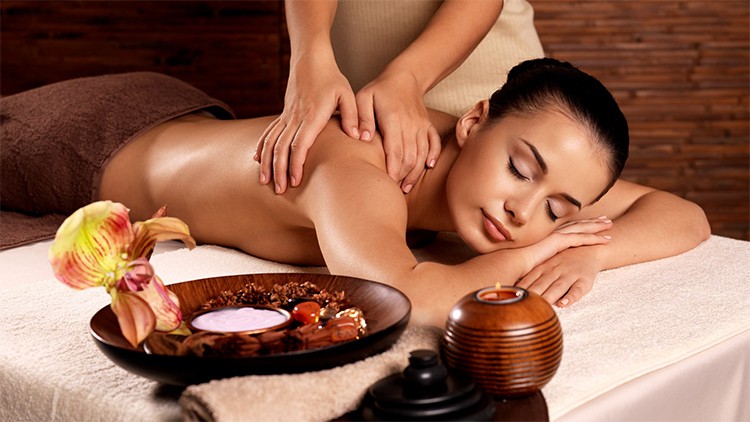
Benefits of Traditional Thai Massage
Physical Benefits
Traditional Thai Massage offers numerous physical benefits. The stretching and manipulation of muscles and joints increase flexibility, improve blood circulation, and enhance posture. It can also alleviate chronic pain, reduce muscle tension, and promote relaxation. Regular Thai Massage sessions may lead to better sleep, increased energy levels, and a strengthened immune system.
Mental and Emotional Well-being
Thai Massage has profound effects on mental and emotional well-being. The calming and meditative nature of the treatment helps to reduce stress, anxiety, and depression. It promotes a sense of deep relaxation and tranquility, allowing the mind to rest and rejuvenate. Thai Massage also helps to release emotional blockages, fostering emotional healing and a greater sense of balance.
Energetic Healing
Thai Massage works on an energetic level, aiming to restore harmony and balance to the body’s energy system. By unblocking stagnant energy and promoting the free flow of prana, it revitalizes the body’s vital energy and promotes healing from within. This energetic healing can have profound effects on the overall well-being of individuals.
Improved Flexibility and Posture
One of the key benefits of Traditional Thai Massage is its ability to improve flexibility and posture. The stretching and manipulation of muscles and joints help to release tension, lengthen muscles, and restore natural movement patterns. Regular Thai Massage promotes better alignment and posture, reducing the risk of injuries and improving overall physical performance.
Key Components of a Thai Massage Session
Preparation and Setting
A Thai Massage session begins with the therapist creating a calm and inviting environment. Soft lighting, soothing music, and the use of essential oils contribute to a tranquil atmosphere. The client is typically provided with loose-fitting clothing or traditional Thai attire to wear during the session.
Positioning and Body Mechanics
Thai Massage is usually performed on a mat on the floor, allowing the therapist to use their body weight effectively. The client is positioned in various yoga-like postures, allowing for better access to specific muscles and joints. The therapist uses proper body mechanics to ensure their own comfort and to prevent strain or injury.
Breathing and Meditation
Both the therapist and the client engage in deep breathing exercises during the massage session. This conscious breathwork helps to deepen relaxation, release tension, and promote a meditative state of mind. By synchronizing the breath with the movement, the client can experience a profound mind-body connection.
Stretching and Massage Techniques
Thai Massage incorporates a range of stretching and massage techniques to release tension and promote flexibility. The therapist utilizes their hands, forearms, elbows, knees, and feet to apply gentle pressure, rhythmic rocking, and dynamic stretches along the energy lines and muscle groups. These techniques help to improve circulation, increase range of motion, and relieve muscular tension.
Closing and Releasing
At the end of a Thai Massage session, the therapist gradually transitions the client out of the deep relaxation state. They may perform gentle stretches or apply soothing compresses to the body, allowing the client to slowly return to a state of wakefulness. The therapist may also offer recommendations for self-care and home exercises to further enhance the benefits of the session.
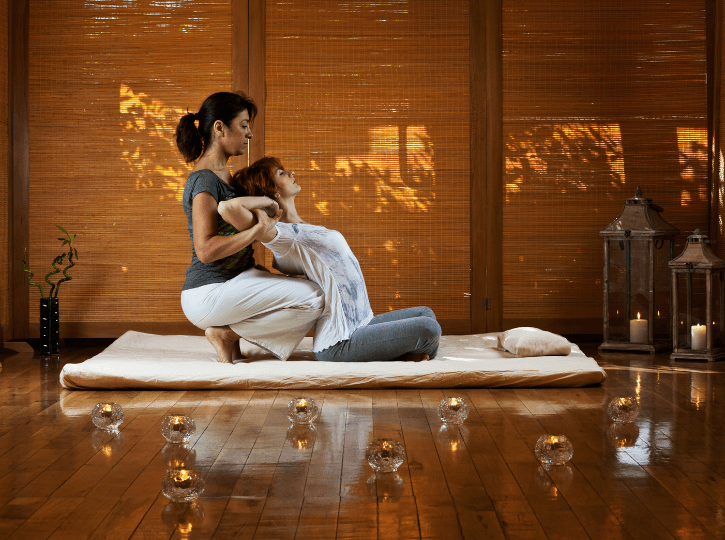
Understanding the Healing Techniques
Pressure Techniques
Pressure techniques in Thai Massage involve the application of rhythmic and varying pressures along the energy lines and specific points on the body. By using their hands, palms, thumbs, and even feet, the therapist is able to release tension, stimulate circulation, and promote the flow of energy.
Stretching and Joint Mobilization
Stretching and joint mobilization form a significant part of Thai Massage. The therapist employs techniques that incorporate gentle and dynamic stretching to release tension in muscles and improve joint mobility. These stretches help to increase flexibility, improve posture, and relieve muscular imbalances.
Reflexology and Acupressure
Reflexology and acupressure techniques are used in Thai Massage to target specific reflex points and pressure points on the feet and hands. These points correspond to different organs and body systems, allowing the therapist to influence overall physical and energetic well-being.
Herbal Compresses and Balms
Thai Massage often incorporates the use of herbal compresses and balms to enhance the therapeutic effects of the treatment. These special blends of herbs and plants are compressed into fabric balls and steamed. When applied to the body during the massage, they help to relieve inflammation, promote relaxation, and invigorate the senses.
Preparing for a Thai Massage
Choosing a Trusted Spa or Therapist
When seeking a Thai Massage experience, it is essential to choose a reputable spa or therapist. Look for establishments that have certified therapists, positive reviews, and a clean and professional environment. Doing research and asking for recommendations from trusted sources can help ensure a safe and beneficial experience.
Communicating Your Needs and Health History
Before your Thai Massage session, it is important to communicate any specific needs or concerns with your therapist. Discuss any injuries, medical conditions, or current medications that may affect the treatment. This open dialogue helps the therapist tailor the session to your individual needs and ensures your safety and comfort.
Clothing and Hygiene Etiquette
During a Thai Massage session, clients are typically provided with loose-fitting clothing or traditional Thai attire to wear. It is important to arrive for the session wearing clean and comfortable clothing that allows for ease of movement. Maintaining good personal hygiene is also essential to ensure a pleasant experience for both the therapist and the client.

Tips for Maximizing the Experience
Relaxation Techniques
During the Thai Massage session, it is important to let go of any distractions or thoughts that may hinder relaxation. Focus on the therapist’s movements, the rhythm of your breath, and the sensations in your body. By surrendering to the experience, you can deepen the benefits and achieve a more profound state of relaxation.
Breathing Exercises
Conscious breathing plays a vital role in the practice of Thai Massage. Focus on deep breathing, inhaling through the nose and exhaling through the mouth. Allow your breath to guide and synchronize with the therapist’s movements, helping to promote relaxation, release tension, and enhance the mind-body connection.
Listening to Your Body
Throughout the Thai Massage session, it is important to listen to your body and communicate any discomfort or pain to your therapist. Everyone’s body is unique, and what feels good for one person may not feel the same for another. It is essential to provide feedback and guidance to the therapist to ensure a safe and effective treatment.
Conclusion
Traditional Thai Massage offers a holistic approach to well-being that harmonizes the mind, body, and spirit. Rooted in ancient traditions and influenced by various healing systems, Thai Massage has evolved into a renowned practice known for its therapeutic benefits. By unlocking the secrets of Traditional Thai Massage, you open yourself up to a world of wellness and rejuvenation. Whether you seek physical relief, emotional healing, or a deeper mind-body connection, Thai Massage can help you unlock your true potential and experience a state of profound relaxation and well-being. So go ahead, embrace the ancient wisdom of Traditional Thai Massage and embark on a journey of self-discovery and rejuvenation.
